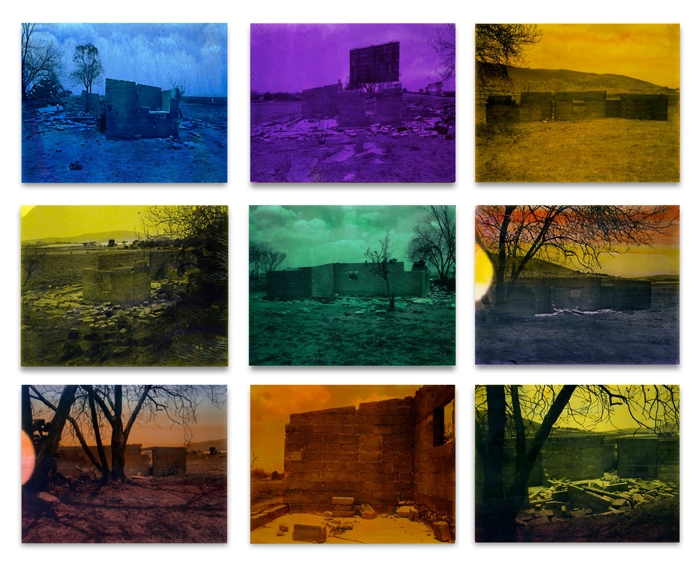I first experienced Pia Camil’s work one afternoon in 2010 while walking on one of downtown Mexico City’s avenues. From high up in a tall office building, a long red banner flowed and waved in the air, beckoning. It read: ‘Pia Camil for Sale’ (For Sale, 2010). I noticed the art crowd going in and so I followed them. On the umpteenth floor of the building, a woman, Camil, was actually wearing the banner as a cape, holding it in place – or perhaps it was holding her. She played the drums while Brett Schultz (of Yautepec gallery) played the guitar. The afternoon city light came in slanted and people sat on the floor. Camil seemed to be tied down yet flying, pushing, fighting.
A similar spirit is embodied in her later piece No A Trio A (2013), where Camil reinterprets Yvonne Rainer’s eponymous choreography. Or perhaps it would be better to say she ‘wrestles with it’, as one does with one’s history. Camil was bound and tied, S&M-style, to a 50m-long piece of cloth that traversed the Casa Encendida in Madrid, while she attempted to follow the choreography steps, and failed due to her many physical constraints – an embodied essai.
Her concern with bodily work and the female body specifically is part of what links this body (pardon the pun) of work to Camil’s Espectacular series (2011-ongoing), which beg the questions: how to make something out of erasure and blight? How to slow down the speed of consumer culture? How to transform spectacle? How to make the public private – intimate, even? And where does our body, or the feminised if not female body, fit in all this? The slowness of these works’ process counters the industrial origin of the visual aspect of the work: the landscapes of capitalist failure that are then activated as beautiful backdrops. Starting from the ruins of Highway Follies (2011) and Rise into Ruin (2013), her hand-coloured photographs that recuperate abandoned buildings on the side of the road; and then moving through a painstaking and elaborate process of fabrication, hand-dyeing and stitching that makes up the defunct advertising billboards she reappropriates as paintings, curtains, installations and vases for the Espectaculares, Camil domesticates publicity and gives a new setting and dimension to the debris of mass consumerism.
It has been my pleasure to write texts on Camil’s work in the past and observe her work process for her shows at Sultana, Paris (2013); OMR in Mexico City (2014) and most recently, The Little Dog Laughed at Blum & Poe, Los Angeles (2014). And it can be your pleasure as well, for this year she has an upcoming solo exhibition at the Contemporary Arts Center, Cincinnati, and she will be a part of Frieze Projects in New York.
Pia Camil has recently had solo exhibitions in her native Mexico City as well as in LA, Paris and Vitoria, Spain, and will show later this year at CAC, Cincinnati. Her ceramic and stitched-canvas works redeploying font fragments from abandoned billboards are created alongside performances that nod to the artist’s alter role in the art-rock band El Resplandor. Selected by Gabriela Jauregui, writer, Mexico City.
Read of our 2015 FutureGreats profiles
This article was first published in the March 2015 issue.
